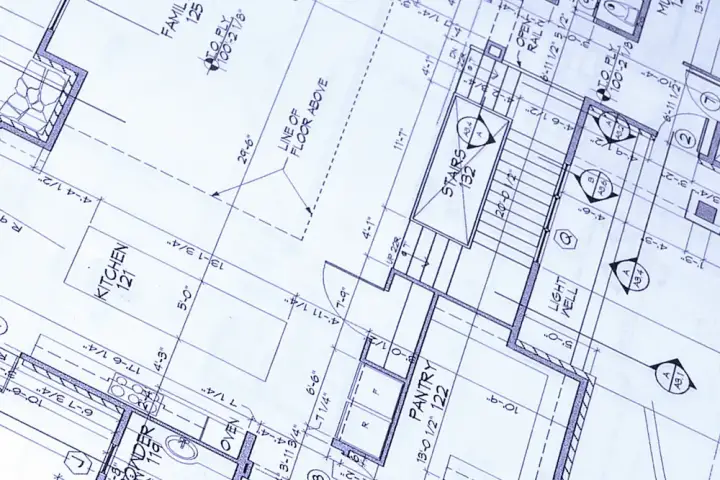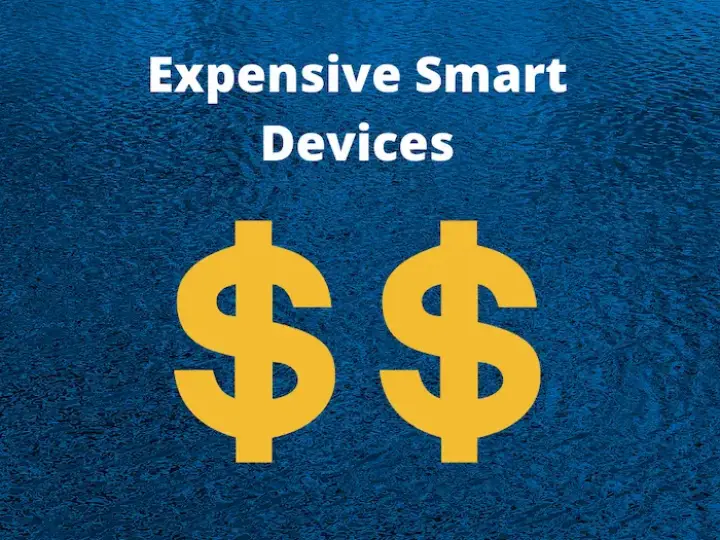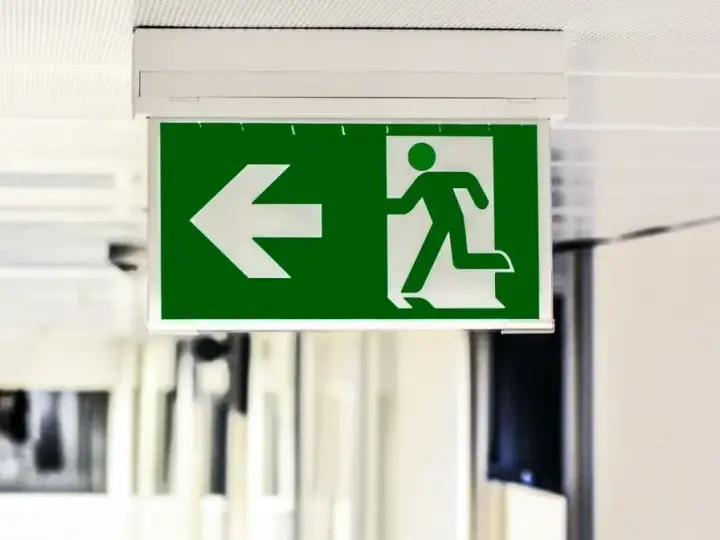5 Reasons Home Automation is so Expensive
Updated on 10th Oct 2020 17:38 in General, Smart
Automation is great. It can help save precious time in your day by making repetitive, mundane tasks automatic. Going from having no smart functionality in your home to fully equipping every area can be intimidating. If you've ever done this or are trying to, you may have wondered why home automation is so expensive. There is, unfortunately, no simple answer, but there are a few factors that will come into play to make your particular situation more expensive.

Table of Contents
Is home automation expensive?
The first question we should answer is whether home automation is actually expensive. The answer is a "kind of". Obviously, it will depend a lot on the specific ecosystem, but generally, the answer will be closer to yes. There are many reasons for this, but if we set aside the specific details for a second and think about how many devices we need to purchase to create any given automation, we might start to see the problem.
If we take the use case of automating the lights in your home, you will need to replace every bulb or switch. The point is that scaling up the few devices you got for fun into a full-sized smart home gets expensive fast. We don't usually think about it, but there are a lot of "things" in our homes. Go around the house and count every light bulb you can find, it's probably a lot more than you thought. It is here that we see how automating the entire home gets expensive due to the sheer number of required purchases.
Why is it expensive?
There are several contributing factors, so we're going to spend a moment with each one.
The quantity
We already mentioned this, but it is really the biggest factor by far. Individual devices that cost as little as 10$ each will quickly add up to a large sum of money when we use them everywhere. Take smart bulbs as an example, if you could find some for 10$ each that will work for your use that seems like a great deal, and it is! However, if we assume that each room will have 1 ceiling light and 1 lamp, and we take a house with 8 rooms, we will have 8 * 2 * 10 = 160$ in light bulbs alone!
Keep in mind some rooms will have a lot more bulbs in them than others, so this estimate is likely very conservative. Also, 10$ is an excellent deal for a smart light bulb, and something closer to 20$ is a lot more realistic. You may know that we don't like to recommend smart bulbs, instead opting for smart switches to add the functionality to an existing fixture. It's better for several reasons but for now, let's just say it means you don't need to change your lighting fixtures mounted on the ceiling.
Those smart switches will typically cost anywhere from 40$ all the way up to 100$ (and possibly higher) each! If we were to install one in each room, we would have 40 * 8 = 320$ just for the lights! Note that this example doesn't even consider the lamps, which would either need smart plugs or bulbs to automate. As we can see, the biggest driving factor in how much you are going to spend on a smart home is the number of devices you need to obtain.

Licensing
Some smart devices must be manufactured by either a single company or at least be approved by a single company. These situations are clearly going to result in a higher cost to consumers as there is no competition driving prices down. One of the biggest reasons the "hubless" device trend took off as much as it did is that companies were fighting to create the cheapest product possible that still delivers acceptable quality. The reality is that some ecosystems simply do not allow this.
A classic example is Insteon, who has always had an attractive "it just works" ecosystem promising to remove any worries you may have about compatibility problems. The reason their products work so well is that they (and perhaps a few others) are the only ones making devices for that platform! This is great for ensuring everything is going to work well, but terrible for getting the best bang for the buck. A related consideration is that if you are already locked into that ecosystem, there is no alternative you can turn to unless you are okay with it not working with everything else.
Another less closed ecosystem is Z-Wave. It is a lot more open than platforms like Insteon, which are selling the entire system, but it still has a significantly higher cost than some competing standards. The reason is that while any company can try their hand at building a Z-Wave device, it must be certified with the standard before it can be sold as a compatible device. This is again great for interoperability but bad for cost control. The companies building these products need to spend more building them, so the net effect is that they will be more expensive for consumers.

Expensive to start with
Sometimes the problem isn't anything to do with smart technology. Take a smart dryer as an example, they cost upwards of 1000%, depending on the brand. Of course, this price tag isn't really because the machine is smart. Dryers are just expensive, to begin with, and the smart functionality is a nice to have addon. Another example of this is Samsung's smart refrigerator, which costs well over 1000$ but is usually that expensive anyways.
The reason we're mentioning this is that appliances will become smarter over time, but replacing them with any product on the market is a big expense. Everyone knows that these machines cost a lot, they always have even from a time when they included elementary control systems. The difference is that replacing a regular appliance just to get the smart functionality is going to make things greatly expensive but is necessary to create a fully complete smart home. We aren't saying you need these to have a smart home, just that they are nice to have but prove an expensive upgrade.
Robots
Who doesn't love robots? Undeniably, there is always a connection between smart home and robots, especially when people are talking about home automation. The problem with robots is that they are not yet at the point of being cheap enough to buy as a convenience. Most smart home gear is relatively cheap when you consider the benefits they can bring to your life via automations or even just remote control. Robots still have a way to go in that aspect as there are plenty of products that have robotic functions, but their high cost isn't always justified.
If we consider robot vacuum cleaners which have arguably been one of the most commonly known household robots, their price has only recently begun to fall into a range that an average person might consider. Many of them still cost well over 500$, which might not be a lot for what you are getting, but most people will just find it a lot of money to shell out on one single purchase. A fully automated will undoubtedly include some really cool robots, but today they are a huge contributor to the idea that home automation is expensive.

Older homes
The age of a home can have a huge impact on how much you can expect to spend on making it smart. Obviously, the best time to configure a house with smart devices is while it is being built. Despite that, modern houses will usually still have an easy enough time retrofitting old equipment with new ones. Older homes, however, can cause the cost to skyrocket. Many things that are a requirement today were simply not thought of in the past. Modern control systems such as smart light switches did not really exist when many of these homes were built, resulting in them not having features we expect today.
Keeping with the light switch, in the past, there was no requirement for a neutral wire to be present in a light switch. That was because, at the time, there was no need to power anything inside the switch so we may as well save on wires and work. Nowadays, it is a legal requirement in most places, so many device manufacturers focus on building products for these houses. As a result, most of the cheaper products are not an option if you don't have a neutral wire, leaving only more expensive ones that do not require one.
Alternatively, you can also pay to have a neutral wire fitted, though that is likely to cost a lot more than the no-neutral products. If you are in this situation, be sure to check my guide on no-neutral wire for light switches here. The same issue exists for thermostats, smart ones will usually need a C-wire, which won't be present in many older homes. As we can see, the age of your home can have a big impact on the type of smart devices you will need to buy. Being forced to buy more expensive products is a good way to make home automation really costly.
Summary
Overall, there are a lot of contributing factors to the price of decking out your home with smart gear. At the end of the day, though, if you enjoy automating things and having the peace of mind that comes with controlling your entire home remotely, the cost will ultimately be worth it. Remember that it is always possible to build up your smart home in smaller pieces by purchasing key parts or going room by room over a longer period of time.



